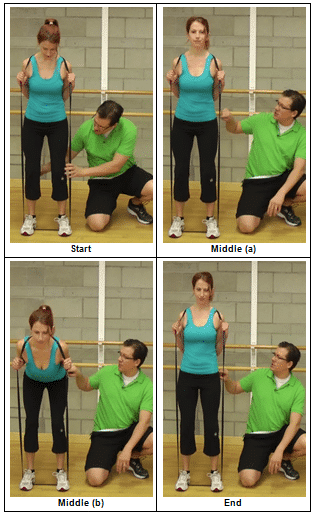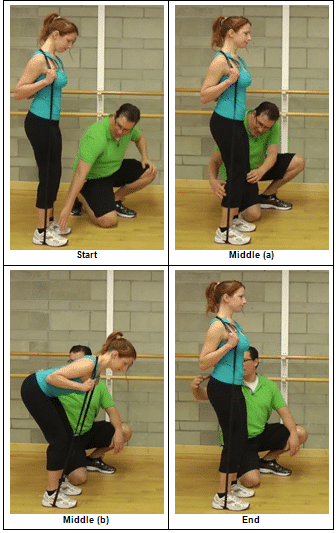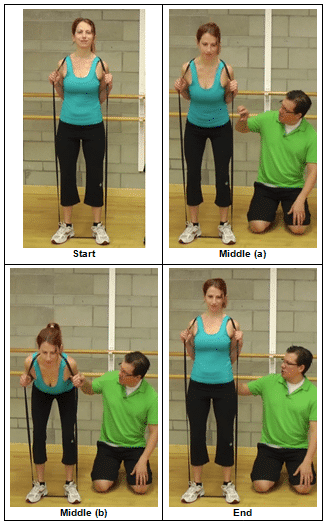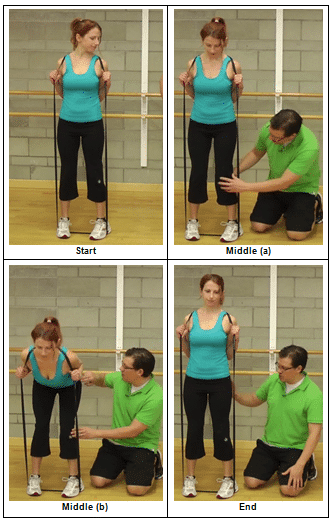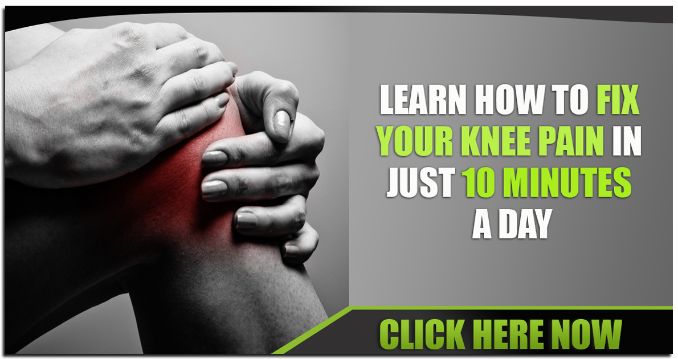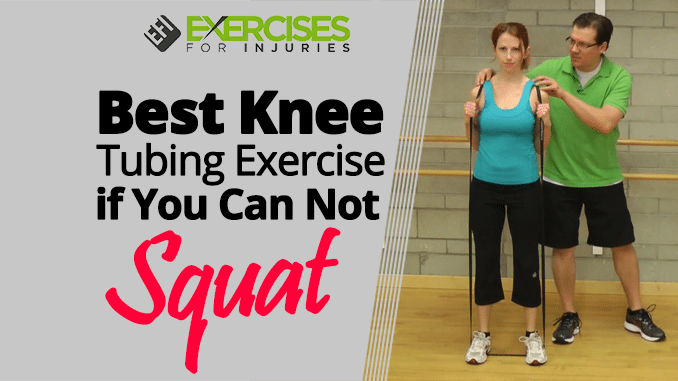
I wanted to go through a great exercise for people who have difficulty squatting. If you experience knee pain when you squat, these three great exercises will help strengthen your knees and, more importantly, your hip. Strong hips will alleviate stress and strain on the knees, which allows the knee to recover and therefore decreases knee pain. These are the three different ways of doing a Knee Tubing Good Morning Exercise.
Best Knee Tubing Exercise if You Can’t Squat
YouTube to watch the YouTube video.
Use standard-resistant loop tubing that you can find in virtually any fitness or regular department store. Resistant loop tubing is available in various resistance levels, so choose the level of resistance that is right for you. You can also check out the resistance tubing online at the Exercises For Injuries shop.
1. Toes Pointing Straight Ahead
Step on the loop tubing, placing the tubing at the arches of your foot, so it is secure. Take the tubing, move it over your head and then position it on your traps. Please do not place the tubing on the back of your neck, as it will cause unnecessary stress. Hold the tubing as a safety measure because we don’t want it to roll behind or forward. Please keep it in position and go through the traditional Good Morning exercise.
Toes Pointing Straight Ahead (Front View)
With your feet pointing straight ahead, bend slightly so that your knees are in a safe position. Hip hinge or bend through the hip, and then return to a standing position. The main movement is happening in your hip area to target the glutes and the hamstrings. If you have knee pain, strengthening the hips and the posterior chain as much as possible decreases the amount of stress put on your knees.
Toes Pointing Straight Ahead (Side View)
Make sure your feet are about hip-width apart as you go through the movement. Your toes should point straight ahead, and your knees should be slightly bent. Your head, shoulders, and hips should be in line.
2. Toes Out
Toes Out
With your knees slightly bent and your toes pointing (approximately 30 degrees), bend through the hip and return up. We are working on the extensors, the glutes, and the hamstrings. When we start rotating the feet out (specifically the rotation happening in the hip), we target the other glutes (glute medius), which is important when preventing and overcoming numerous injuries in the hip, knee, and back.
3. Toes In
Toes In
Rotate your toes inwards about 30 degrees. Make sure that the movement is happening in the hip and not twisting in the knee so you don’t stress your knees unnecessarily. While toeing in with a slight knee bend, bend at the hip. You should feel this in your hamstrings at the bottom position.
So there you go! This is a great exercise to do if you can’t squat or whenever you are going through a squatting movement or doing squatting exercises that irritates your knees.
Make sure to swing by ExercisesForInjuries.com. There is a good chance I have a video, an interview, or a blog post on your injury or pain. Enter your injury or pain into the search bar on the top right of the screen. There is a good chance I have something for you that will help you.
Second, if you watch this on YouTube, head above and hit “Subscribe.” Every couple of days, you will receive a video like this, a guest video from one of my friends in the fitness world, or an interview that I have done with one of my friends in the fitness world.
Third, head down below hit “Like,” and leave me a comment or question.
Rick Kaselj, MS
If you are suffering from knee discomfort and want to end your knee pain, click here to check out the Knee Pain Solved program.

